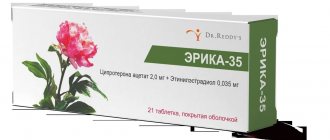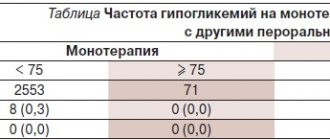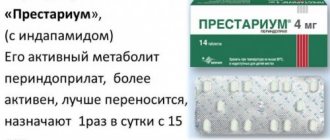Urdoxa®
Urdox® capsules are taken orally, without chewing, with a small amount of water.
Symptomatic treatment of primary biliary cirrhosis
The daily dose depends on body weight and ranges from 3 to 7 capsules (approximately 14 ± 2 mg ursodeoxycholic acid per 1 kg of body weight). In the first 3 months of treatment, taking Urdoxa® should be divided into several doses throughout the day. After improving liver parameters, the daily dose of the drug can be taken 1 time, in the evening.
The following mode of application is recommended:
| Body mass | Daily dose | in the morning | during the day | In the evening |
| 34-46 kg | 2 capsules | 1 | — | 1 |
| 47-62 kg | 3 capsules | 1 | 1 | 1 |
| 63-78 kg | 4 capsules | 1 | 1 | 2 |
| 79-93 kg | 5 capsules | 1 | 2 | 2 |
| 94-109 kg | 6 capsules | 2 | 2 | 2 |
| Over 110 kg | 7 capsules | 2 | 2 | 3 |
Urdoxa® should be taken regularly. The duration of therapy is unlimited.
Dissolving cholesterol gallstones
The recommended dose is 10 mg of ursodeoxycholic acid per 1 kg of body weight per day, which corresponds to:
| Body mass | Daily dose |
| Up to 60 kg | 2 capsules |
| 61-80 kg | 3 capsules |
| 81-100 kg | 4 capsules |
| Over 100 kg | 5 capsules |
Urdox® should be taken daily in the evening, before bed. The duration of therapy is 6-12 months. To prevent recurrent cholelithiasis, it is recommended to take the drug for several months after the stones have dissolved.
Treated biliary reflux gastritis
1 capsule of Urdoxa® daily, 1 time per day before bed. The course of treatment is from 10-14 days to 6 months, if necessary up to 2 years.
Primary sclerosing cholangitis
The daily dose is 12-15 mg/kg; if necessary, the dose can be increased to 20-30 mg/kg in 2-3 doses. The duration of therapy ranges from 6 months to several years.
Alcoholic liver disease
The average daily dose is 10-15 mg/kg in 2-3 doses. The duration of therapy ranges from 6-12 months or more.
Non-alcoholic steatohepatitis
The average daily dose is 10-15 mg/kg in 2-3 doses. The duration of therapy ranges from 6-12 months or more.
Cystic fibrosis (cystic fibrosis)
The daily dose is 12-15 mg/kg; if necessary, the dose can be increased to 20-30 mg/kg in 2-3 doses. The duration of therapy ranges from 6 months to several years or lifelong.
Chronic hepatitis of various origins
The daily dose is 10-15 mg/kg in 2-3 doses. The duration of therapy is 6-12 months or more.
Biliary dyskinesia
The average daily dose is 10 mg/kg in 2 divided doses. The duration of therapy ranges from 2 weeks to 2 months. If necessary, it is recommended to repeat the course of treatment. For children over 3 years of age, UDCA is prescribed individually at a rate of 10-20 mg/kg/day.
Urdoxa, 100 pcs., 250 mg, capsules
Inside,
without chewing, with a small amount of water.
Symptomatic treatment of primary biliary cirrhosis
The daily dose depends on body weight and ranges from 3 to 7 caps. - approximately (14±2) mg of UDCA per 1 kg. In the first 3 months of treatment, the dose of Urdoxa should be divided into several doses throughout the day. After improving liver parameters, the daily dose of the drug can be taken 1 time, in the evening.
The following application mode is recommended (see Table 1).
Table 1
| Body weight, kg | Daily dose, capsules | Morning | Day | Evening |
| 34–46 | 2 | 1 | − | 1 |
| 47–62 | 3 | 1 | 1 | 1 |
| 63–78 | 4 | 1 | 1 | 2 |
| 79–93 | 5 | 1 | 2 | 2 |
| 94–109 | 6 | 2 | 2 | 2 |
| more than 110 | 7 | 2 | 2 | 3 |
Urdoxa® should be taken regularly. The duration of therapy is unlimited.
Dissolving cholesterol gallstones
The recommended dose is 10 mg UDCA per 1 kg/day (see Table 2).
table 2
| Body weight, kg | Daily dose, capsules |
| up to 60 | 2 |
| 61–80 | 3 |
| 81–100 | 4 |
| over 100 | 5 |
Urdoxa® should be taken daily in the evening, before bedtime. The duration of therapy is 6–12 months. To prevent recurrent cholelithiasis, it is recommended to take the drug for several months after the stones have dissolved.
Treatment of biliary reflux gastritis
1 caps. Urdoxa® daily 1 time a day before bedtime. The course of treatment is from 10–14 days to 6 months, if necessary up to 2 years.
Primary sclerosing cholangitis
The daily dose is 12–15 mg/kg; if necessary, the dose can be increased to 20–30 mg/kg in 2–3 doses. The duration of therapy ranges from 6 months to several years.
Alcoholic liver disease
The average daily dose is 10–15 mg/kg in 2–3 doses. The duration of therapy ranges from 6–12 months or more.
Non-alcoholic steatohepatitis
The average daily dose is 10–15 mg/kg in 2–3 doses. The duration of therapy ranges from 6–12 months or more.
Cystic fibrosis (cystic fibrosis)
The daily dose is 12–15 mg/kg; if necessary, the dose can be increased to 20–30 mg/kg in 2–3 doses. The duration of therapy ranges from 6 months to several years or lifelong.
Chronic hepatitis of various origins
The daily dose is 10–15 mg/kg in 2–3 doses. The duration of therapy is 6–12 months or more.
Biliary dyskinesia
The average daily dose is 10 mg/kg in 2 divided doses. The duration of therapy ranges from 2 weeks to 2 months. If necessary, it is recommended to repeat the course of treatment.
For children over 3 years of age, the drug is prescribed individually at a rate of 10–20 mg/kg/day.
Urdoxa
A hepatoprotective drug, it also has choleretic, cholelitholytic, hypocholesterolemic, and immunomodulatory effects.
It is embedded in the hepatocyte membrane, stabilizes its structure and protects the hepatocyte from the damaging effects of bile salts, thus reducing their cytotoxic effect. In case of cholestasis, it activates Ca2+-dependent alpha protease and stimulates exocytosis, reduces the concentration of toxic bile acids (chenodeoxycholic, lithocholic, deoxycholic and others), the concentrations of which are increased in patients with chronic liver diseases.
Competitively reduces the absorption of lipophilic bile acids in the intestine, increases their “fractional” turnover during enterohepatic circulation, induces choleresis, stimulates the passage of bile and the excretion of toxic bile acids through the intestine.
Shields non-polar bile acids (chenodeoxycholic acid), due to which mixed (non-toxic) micelles are formed.
Reduces the saturation of bile with cholesterol by reducing the synthesis and secretion of cholesterol in the liver and inhibiting its absorption in the intestine.
Increases the solubility of cholesterol in the biliary system, stimulates the formation and secretion of bile. Reduces the lithogenicity of bile, increases the concentration of bile acids in it, causes increased gastric and pancreatic secretion, enhances lipase activity, and has a hypoglycemic effect.
Causes partial or complete dissolution of cholesterol gallstones, reduces the saturation of bile with cholesterol, which promotes its mobilization from gallstones.
It has an immunomodulatory effect, affects immunological reactions in the liver: reduces the expression of some histocompatibility antigens - HLA-1 on the membrane of hepatocytes and HLA-2 on cholangiocytes, affects the number of T-lymphocytes, the formation of interleukin 2, reduces the number of eosinophils, suppresses immunocompetent Ig (in primarily IgM).
Pharmacokinetics
Suction
Ursodeoxycholic acid is absorbed in the small intestine by passive diffusion (about 90%), and in the ileum by active transport. Cmax when taken orally at a dose of 50 mg after 30, 60, 90 minutes is 3.8 mmol/l, 5.5 mmol/l and 3.7 mmol/l, respectively, and is achieved after 1-3 hours.
Distribution
Plasma protein binding is high - up to 96-99%. Penetrates through the placental barrier. With systematic use of the drug, ursodeoxycholic acid becomes the main bile acid in the blood serum and accounts for about 48% of the total amount of bile acids in the blood. The therapeutic effect of the drug depends on the concentration of ursodeoxycholic acid in bile.
Metabolism and excretion
Metabolized in the liver (first-pass clearance through the liver) into taurine and glycine conjugates. The resulting conjugates are secreted into bile.
About 50-70% of the total dose of the drug is excreted in the bile. A small amount of unabsorbed ursodeoxycholic acid enters the colon, where it is broken down by bacteria (7-dehydroxylation); the resulting lithocholic acid is partially absorbed from the colon, but is sulfated in the liver and quickly excreted in the form of sulfolithocholylglycine or sulfolitocholyltaurine conjugate.
Using the drug for a hangover
If the day before the start of treatment a person drank a large amount of alcoholic beverages, he will have a hangover the next day. This means that ethanol is completely absorbed from the gastrointestinal tract, concentrating in the blood and internal organs, including the liver.
If the patient does not suffer from alcoholism, the toxic effect on the organ is minimal. But doctors recommend waiting 1-2 days after drinking the last dose of alcohol, only then starting therapy. This will prevent the medicine from not working.
Consequences of drinking alcohol
If you did not listen to the doctor and consumed alcoholic beverages and the drug at the same time, the following consequences will occur:
- indigestion, increased inflammatory processes in the gastrointestinal tract (the patient will experience nausea, vomiting and impaired stool formation);
- lack of therapeutic effect from the drug, which will cause further liver damage;
- decreased function of the biliary tract and ducts, due to which stones will gradually accumulate (large conglomerates may occur);
- if a person suffers from hepatitis and fibrosis, bilirubin spreads through the blood and enters the brain, which leads to encephalopathy (it is life-threatening for the patient and causes coma).
To reverse the negative consequences, it is recommended to stop taking the drug and undergo addiction treatment.
Compatibility of Urdoxa and alcohol
? Both substances enter the body orally. Absorption occurs through the intestinal mucosa. The drug and ethanol have a toxic effect on the gastrointestinal tract, causing digestive and dyspeptic disorders. From the blood the product is distributed to the tissues.
Since metabolism occurs in the liver, the greatest impact falls on this organ. The medicine is designed to protect hepatocytes, but ethyl alcohol completely eliminates the effect. Therefore, there is no therapeutic effect. The patient takes the drug in a course, but it is useless.
Inflammatory liver disease intensifies, which can progress to the stage of fibrosis. That is, the parenchyma is replaced by connective tissue, and the function of the organ decreases.
URDOXA (capsules)
.
After all, everything is interconnected! And today I want to talk about one medicine that I am very familiar with firsthand. The doctor prescribed this drug to me, according to indications, of course.
There are quite a few similar analogues of this medicine, these are exchol, ursodez, zkurochol, there are others... All these remedies are quite effective, but all are expensive. And I take a relatively inexpensive analogue called Urdoxa. Practically the indications are the same, the effect is good, but the price is still lower... All the drugs I have listed are practically ursodeoxycholic acid. Almost the same thing and I don’t see the point in overpaying for expensive brands.
This product is sold in city pharmacies, you can buy it without a prescription, but it is not always on sale.
These are these cardboard boxes in a grayish tint.
Packaging: 50 capsules, 250 milligrams each. This drug is from Russian manufacturers. Manufactured in the city of St. Petersburg.
One box contains five of these silver blister packs.
One blister contains 10 white capsules.
The production and expiration dates of such capsules are stamped on each package.
The capsules are medium in size, but they are easy to swallow, since the shell in them is not hard, quite elastic. The course of taking such a medicine is determined specifically by the diagnosis, which is determined by the attending physician.
This drug must be taken for a long time, without interruption, to achieve an effective result. The amount you take may vary depending on your weight and diagnosis. There are many indications for the use of this medicine. I took one capsule (at first) three times a day and always after meals, and then switched to taking one capsule before bed. You need to drink them with water. The capsules have no odor; they must be swallowed whole without chewing.
The box, of course, also contains instructions for use. The composition of this medicine is indicated.
There are many side effects too.
And contraindications, however, as with all medications.
Personally, my tolerance is normal. This drug definitely helped me. I coped with inflammatory processes, the heaviness in the right hypochondrium went away, helped to get rid of pain symptoms and helped to improve the functioning of internal organs associated with the gastrointestinal tract.
But don’t forget that everything is individual. You should not self-medicate. Consult your doctor and read the instructions carefully.
The cost of one box at the time of my purchase was 750 rubles. The shelf life is four years. This medicine can be stored at room temperature.
I rate these capsules as effective, and if your doctor recommends them, don’t ignore them. They help me.
But, of course, it’s better not to get sick. I wish everyone good health!
The liver is a filter in our body that works to protect us from harmful substances. Therefore, liver health is one of the most important stages in the healing of the entire body.
Use of the drug for alcoholism
If a person suffers from alcoholism, the work of the liver, kidneys, gastrointestinal tract, pancreas, and brain is disrupted.
The instructions for use of the medicine indicate that it is not recommended for patients with hepatitis, fibrosis, cirrhosis, or inflammatory diseases of the digestive tract. Therefore, the drug cannot be prescribed if the patient’s alcoholism has reached the stage of complications.
If a person's addiction has recently developed, the disease will not occur immediately. It progresses gradually. But the medicine is not recommended, simultaneous intake of substances will eliminate the therapeutic effect, further treatment is irrational.
Urdoxa 500 Tablets, box, 50 pcs, 500 mg, for oral administration, film-coated
Directions for use and doses
Urdox capsules are taken orally, without chewing, with a small amount of water. Symptomatic treatment of primary biliary cirrhosis The daily dose depends on body weight and ranges from 3 to 7 capsules (approximately 14±2 mg of ursodeoxycholic acid per 1 kg of body weight). In the first 3 months of treatment, Urdoxa should be divided into several doses throughout the day. After improving liver parameters, the daily dose of the drug can be taken 1 time, in the evening. The following regimen is recommended: Body weight Daily dose morning afternoon evening 34-46 kg 2 capsules 1 - 1 47-62 kg 3 capsules 1 1 1 63-78 kg 4 capsules 1 1 2 79-93 kg 5 capsules 1 2 2 94- 109 kg 6 capsules 2 2 2 More than 110 kg 7 capsules 2 2 3 Urdoxa should be taken regularly. The duration of therapy is unlimited. Dissolution of cholesterol gallstones The recommended dose is 10 mg of ursodeoxycholic acid per 1 kg of body weight/day, which corresponds to: Body weight Daily dose Up to 60 kg 2 capsules 61-80 kg 3 capsules 81-100 kg 4 capsules Over 100 kg 5 capsules of the drug Urdox should be taken daily in the evening, before bed. The duration of therapy is 6-12 months. To prevent recurrent cholelithiasis, it is recommended to take the drug for several months after the stones have dissolved. Treatment of biliary reflux gastritis: 1 capsule of Urdoxa daily, 1 time per day before bedtime. The course of treatment is from 10-14 days to 6 months, if necessary up to 2 years. Primary sclerosing cholangitis The daily dose is 12-15 mg/kg; if necessary, the dose can be increased to 20-30 mg/kg in 2-3 doses. The duration of therapy ranges from 6 months to several years. Alcoholic liver disease The average daily dose is 10-15 mg/kg in 2-3 doses. The duration of therapy ranges from 6-12 months or more. Non-alcoholic steatohepatitis The average daily dose is 10-15 mg/kg in 2-3 doses. The duration of therapy ranges from 6-12 months or more. Cystic fibrosis (cystic fibrosis) The daily dose is 12-15 mg/kg; if necessary, the dose can be increased to 20-30 mg/kg in 2-3 doses. The duration of therapy ranges from 6 months to several years or lifelong. Chronic hepatitis of various origins The daily dose is 10-15 mg/kg in 2-3 divided doses. The duration of therapy is 6-12 months or more. Biliary dyskinesia The average daily dose is 10 mg/kg in 2 divided doses. The duration of therapy ranges from 2 weeks to 2 months. If necessary, it is recommended to repeat the course of treatment. For children over 3 years of age, the drug is prescribed individually at a rate of 10-20 mg/kg/day.


